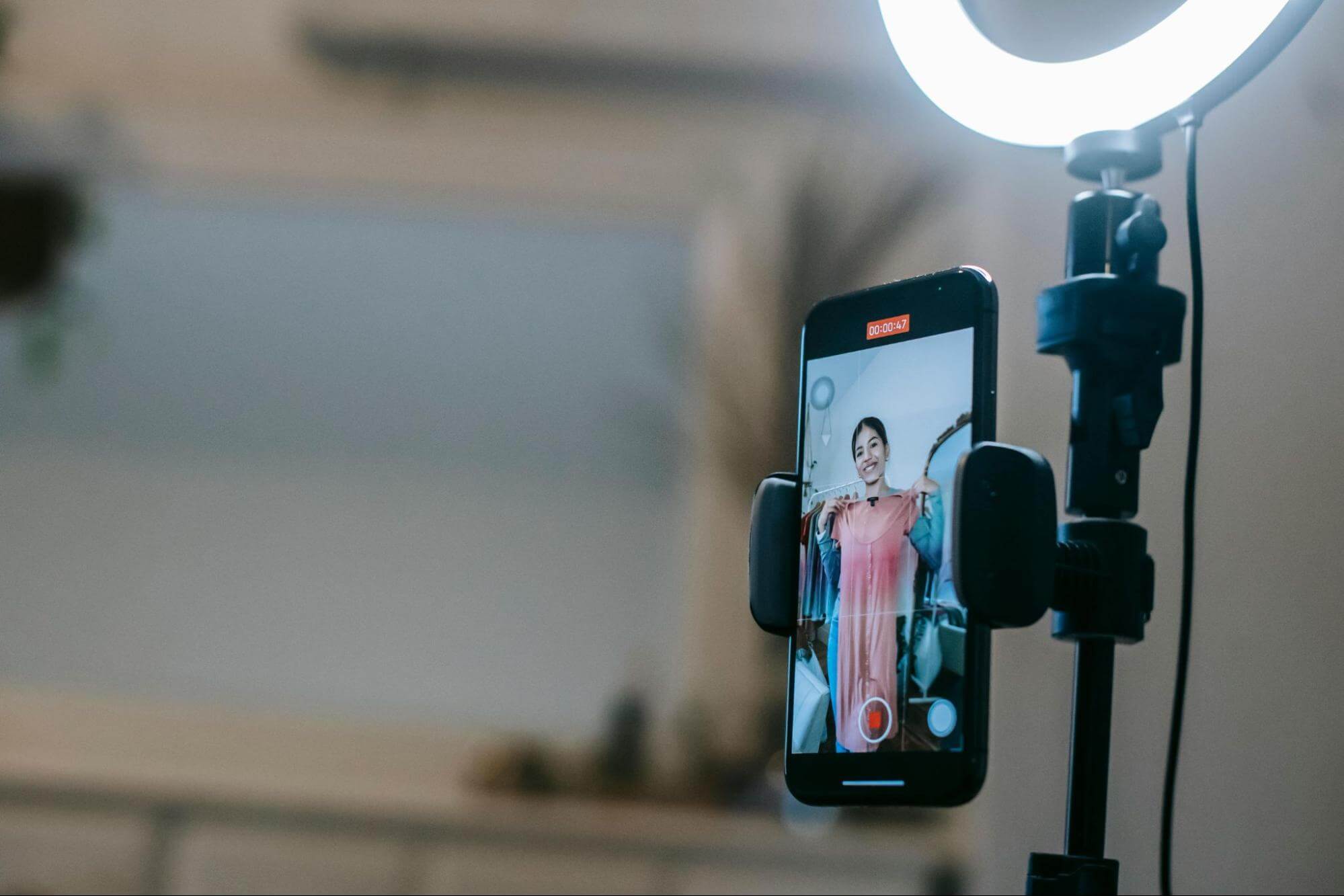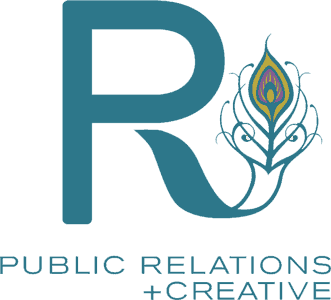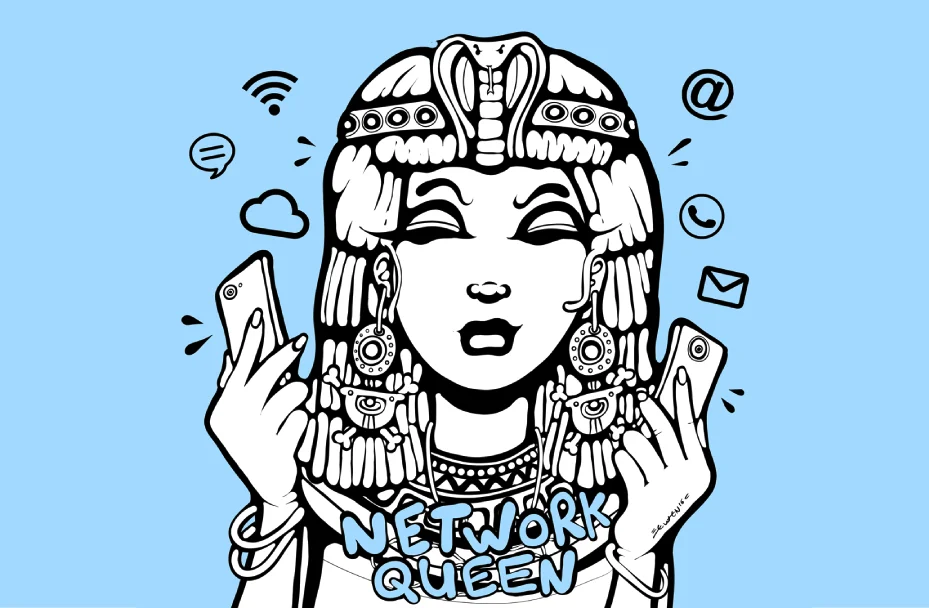R Public Relations Firm
PR Best Practices: How to Avoid Hitting the Panic Button and Overreacting
It happens to the best brands—despite meticulous planning, a PR campaign doesn’t deliver the expected results. Worse, an unforeseen crisis derails all the hard work, putting your brand’s reputation at risk. When panic sets in, it’s easy to overreact emotionally, but in public relations, hasty decisions can do more harm than good. And trying too hard can make a brand look desperate. Emily Reynolds Bergh, award-winning public relations guru and founder of RPR Firm, reminds us that “Desperation is like a bad perfume—everyone notices.” Whether your strategy is struggling with a lack of media traction, a social media backlash or an internal PR crisis, keeping a cool head is the key to regaining control. Here are some PR best practices from Emily on what to do before you hit the panic button.

1. The number one PR best practice? Pause before you react
Your first instinct might be to fire off a response immediately, but acting out of frustration or fear can make things worse. Take a step back and assess the situation rationally. What’s the real issue? Is it a lack of engagement, a negative story or a misalignment between your message and your audience? Giving yourself a moment to breathe can prevent unnecessary missteps.
Ask yourself:
- Is this truly a crisis, or is it a temporary bump?
- Who is the audience affected by this issue?
- What is the likely outcome of responding versus staying silent?
- How will our brand be perceived based on our next move?
“Think before you act. You want your response to be measured, strategic and effective. This doesn’t mean ignoring the problem—it means responding with clarity rather than panic,” explains Emily.
2. Get the right people involved
You shouldn’t handle your PR crisis alone. Gather your internal communications team, key stakeholders and PR professionals to develop a strategic response. If you have an agency, lean on their expertise for PR best practices. The right messaging often requires input from multiple perspectives, ensuring you don’t overlook critical angles.
A great example of a team-driven response is how some brands use crisis response task forces—a designated group trained to handle PR challenges before they escalate. Even if your company doesn’t have a formal crisis team, knowing who to involve before a crisis happens ensures a smoother, more controlled response when the pressure is on.
Emily shares, “The key takeaway? In crisis mode, you don’t just need a voice—you need the right voices. Collaborating with a strategic team leads to smarter, more effective decision-making.”

3. Audit your messaging and strategy
If your campaign isn’t landing the way you expected, revisit your core messaging. Are you addressing your audience’s pain points? Is the timing right? Are you using the right platforms? A deep dive into your campaign analytics is one the PR best practices that can reveal whether the issue is with your message, your distribution channels or external factors beyond your control.
“If you’re dealing with negative press, determine whether a response is necessary. Not all criticism requires a rebuttal,” says Emily. Sometimes, letting the noise die down is the best approach. If a response is needed, craft a message that’s clear, empathetic and aligned with your brand values.
4. Avoid public displays of desperation
When things go south, resist the urge to overcompensate. Scrambling to push out more press releases, spamming journalists, or drastically changing your messaging mid-campaign can look erratic and insincere. Your audience can sense desperation, and that weakens credibility.
Instead, Emily suggests these PR best practices: “Be strategic and measured. PR is about relationships, and you don’t want to burn bridges by acting recklessly.” Take a step back, refine your strategy and move forward with confidence rather than panic.
5. Leverage owned media and brand advocates
If media coverage isn’t going your way, shift your focus to channels you control. Your blog, social media platforms and email marketing can help reframe the narrative. “Don’t overcomplicate your response,” says Emily. “A well-crafted statement from leadership, a behind-the-scenes look at how your company is handling a challenge or testimonials from satisfied customers can all shift the focus back to your brand’s strengths.”
Amongst other PR best practices is to lean on brand advocates—whether they’re customers, employees, or industry partners—to help amplify your message organically.

6. Learn from the experience
Every PR challenge presents a learning opportunity. Conduct a post-mortem:
- What went wrong?
- Were there red flags that were overlooked?
- What could be done differently next time?
Building resilience in PR means being able to pivot, adjust and improve. The best brands aren’t immune to PR challenges—they’re just better at handling them.
Final Thoughts
PR crisis mode can feel overwhelming, but the key to coming out stronger is maintaining composure, being strategic and refining your approach. Whether you rework your messaging, rely on owned media or simply know when to stay silent, handling crisis mode with confidence keeps your brand credibility intact.
As Emily wisely puts it: “Panic is contagious—but so is poise. Choose wisely.”
Connect with us today for more information about how RPR can help you respond (or not respond!) to a situation without going into PR panic mode.
Marketing & PR Trends For 2025
Both the marketing and public relations (PR) industries are constantly changing and evolving. The agencies and firms that are the most successful have to keep up with the constant influx of new information and practices. Those that don’t are often pushed to the wayside or phased out of the industry. That said, here are a few of the marketing and PR trends you should focus on when creating your campaigns in 2025.
AI Integration
Our first marketing and PR trend for 2025 is artificial intelligence (AI). This once-scary concept has turned into one of the most common buzzwords around. Yet AI, as we know it today, is still a polarizing tool. For some, it is nothing more than a nuisance, seemingly only needed by those who can’t create for themselves. For others, it is the holy grail, a time-saver, and a creativity sparker that seems sent from the heavens. In reality, AI is neither.
However, it is a tool that, to be used effectively, should be carefully monitored. In marketing and PR, AI is especially helpful in drafting outlines and brainstorming. The danger is when it’s assumed that once AI creates content, you’re done, and it’s ready to be signed, sealed and delivered. That’s not the case, as it’s actually pretty easy to distinguish AI from human writing. Not to mention there are plenty of tools to check how much of your content is AI-generated. So, to make sure you are providing quality original content, don’t rely on AI too heavily. Like it or not, AI is here to stay, and it can truly be helpful when used with caution.

Hyper-Personalized Messaging
While hyper-personalized messaging isn’t necessarily new marketing and PR trends, it’s still a focus in 2025. As more and more consumer time is spent online and with social media sifting through the barrage of constant marketing and PR messages, it’s essential to personalize your campaigns in order to break through the clutter.
Now, with the advancements in data analytics and even AI, it’s easier than ever to craft hyper-personalized campaigns targeted specifically for your audience. Consumers want to feel seen and heard. They want a connection, and by personalizing your messaging, your brand will truly resonate with them.
Live Video is Having a Moment
Our final marketing and PR trends is live video. Again, live video isn’t new, but it’s definitely having a moment in 2025 as there are now so many platforms that offer live stream options, from Facebook Live to X (previously Twitter) spaces to Instagram Live and more. As the live video options continue to grow, that momentum is extending to brands who are learning how they, too, can capitalize on this popularity.
Take TikTok for example. Many small business owners have taken to TikTok Lives to have live showcases of their products to help drive sales in their online shops. As the year progresses, we recommend brands start finding ways to implement live video into their campaigns if you haven’t already. And if you have, see where else you can implement live videos effectively, as we believe live video is not just a 2025 trend but a new staple for the industry.

For expert help with your marketing and PR campaigns in 2025, contact RPR today to schedule a discovery call.
Social Media for Small Businesses: How to Create a Content Strategy
As a small business owner, you know that it takes continuous effort and work to increase your online presence and reach the eyes of your target audience. But now that we’re well into the digital age, the question of how important social media for small businesses is remains a pressing question for many—despite how widespread and integral to daily life these platforms have become.

As a small business owner, you know that it takes continuous effort and work to increase your online presence and reach the eyes of your target audience. But now that we’re well into the digital age, the question of how important social media for small businesses is remains a pressing question for many—despite how widespread and integral to daily life these platforms have become.
With billions of users on social platforms and more than half of U.S. adults reporting that they use Instagram alone, it’s never been more clear that social media for small businesses is crucial. Utilizing social media for your business’ growth and recognition will help ensure that you’re connected with your customers while keeping you competitive. To do this, you’ll need a social media content strategy that meets your business needs.
At R Public Relations, we know the most effective ways to build and integrate a content strategy for businesses across a range of social media platforms—from Facebook, Instagram and TikTok to LinkedIn.
Below, let’s dig into what exactly a social media content strategy is and how you can get started creating your own.
What is a Social Media Content Strategy?
A social media content strategy is a roadmap for how your small business will create, manage and optimize its online presence. It includes:
- A social media posting schedule
- How social content will be created
- Social media goals
- Target audience demographics
- Specific plans for each social media platform
Your social media content strategy will help you and your team fully understand how to best manage your online presence across your chosen social media—from how to tackle content creation for different platforms to keeping track of social analytics like conversion rates and engagement.
Effective social media for small businesses requires a carefully planned content strategy so you can connect with your audience in the most relevant ways for your business. This can be through targeted social media campaigns, engaging content, building influencer partnerships, and building a consistent brand voice on your socials.
How to Create a Social Media Content Strategy
The wonderful thing about social media is that there is no one-size-fits-all approach. Each small business is completely unique in its own right and that requires your social media content strategy to be distinctive. But when it comes to creating your content strategy, there are some specific methods you can use to create a strong, long-term strategy for your business.
Create social media goals that align with your business intentions.
No social media content strategy can begin without setting social media goals for your small business. Clearly defined goals will lay a strong foundation for your entire content strategy, including the social content you’ll be creating and sharing. To create clear goals, you’ll want to consider what you’re looking to get out of your social media specifically and ensure that your goals align with your long-term business intentions.
For example, say that three of your social media goals are to increase brand awareness, grow revenue and build a strong community around your small business. These are all clearly defined goals for which you can utilize your social media. They also tie directly into your small business’s growth. By creating social goals that align with your business intentions, you’ll ensure that you can’t lose sight of your social media content strategy.
Determine the best social media platforms for your small business.
You may already be on social media platforms and you’re probably aware that many large businesses have accounts on all available social platforms. But as a small business, it’s imperative that you take a step back and ask yourself what social media networks are absolutely key for you.
Consider the following factors as you determine the best social platforms for your business:
- Think about what features each social media offers and what would be beneficial to your business. For example, Instagram and TikTok are visually-driven platforms that center photos and videos while LinkedIn is more focused on text-based content.
- Figure out where your target audience is spending most of their time—younger and older audiences tend to use different platforms. About 42% of Millennials are using Meta Threads while Baby Boomers are still going strong on Facebook. You’ll want to meet your audience where they are.
- Consider the type of social content you want to focus on and how you want to engage with your audience. Will you be creating videos or blogs? Do you want to encourage ongoing conversations or be able to participate in social trends?
Keeping these factors in mind will help you choose which platforms will have the most impact for your business and social media content strategy.
Put together a social media content plan.
Within your larger social media content strategy, you’ll need to put together a specific content plan. This plan will be a defining outline for the type of content that you and your team are creating for each social platform you’re on. Keep factors like social media features, what type of content your target audience engages with most, and what industry content works best in mind while creating this plan.
HubSpot’s 2024 Consumer Trends Report found that 63% of consumers feel that content posted by brands on social media is authentic or relatable. You can use this kind of data, along with what your target audience enjoys seeing from you, as a guide to creating your content plan. Your target audience might be more keen to engage with long-form blog posts over videos or vice-versa—factor what content they engage with most into your content plan. A content plan will serve you in many ways, allowing you to plan social posts in advance and ensuring that your social media content strategy is relevant.

It’s Time to Consider Your Social Media Content Strategy
Creating a social media content strategy for your small business can seem daunting, but it doesn’t have to be. By taking it one step at a time, you can build a long-term content strategy that is specially tailored for your business’ needs and will help you get the most out of your chosen social platforms.
For expert PR help on tackling social media for small businesses, contact RPR today to schedule a discovery call.
The evolution of influencer marketing: Why bigger isn’t always better
It seems like just yesterday we were explaining what influencer marketing was to family, friends and clients, but—as is often said—time truly flies.
With today's rapid technological advancement and continuous social change, the days of Myspace and traditional mommy bloggers from the early aughts are long gone.
Influencer marketing has quickly evolved from a far-off, novel concept to a household term and a facet of daily life for all internet users. While this contemporary aspect of marketing provided PR practitioners, marketers and businesses with vast new opportunities for success, consumers have become fatigued by the content of many macro-influencers with significant wealth, millions of followers, large-scale brand deals, and the like.
Due to this priority shift among much of the public, brands and professionals are following suit by partnering with more micro- and nano-influencers who have smaller, highly engaged audiences.
While securing collaborations with individuals with more expansive audiences may seem like the best outcome for brands, this is often untrue. In fact, the micro- and nano-influencers we see today typically offer more authentic endorsements and foster closer connections with their followers, making them valuable partners for brands seeking genuine engagement.
One of the many ways that marketing and public relations firms mindfully and strategically serve clients is by monitoring various trends and continuously navigating these seemingly undetectable shifts, which can significantly impact brands across all industries.

Then and now
According to Aspire, the pioneers of influencer marketing can be traced back as early as the 18th century. British potter Josiah Wedgwood earned the official title of "Her Majesty's Potter" after receiving approval from Queen Charlotte in 1765.
At a time when the Queen was the ultimate influencer, Wedgwood opted to leverage his new status and established the world's first luxury pottery brand. Even then, an endorsement of this caliber was the catalyst for the "Queensware" brand, making it desirable and relevant to the masses.
Centuries later, modern royalty—celebrities—took over this role. In the early 2000s, celebrity endorsements leveraged the influence of these seemingly unreachable icons and tastemakers with actual, current preferences. Because of these individuals' sway on the public, brands like Nike and Pepsi began to create mutually beneficial partnerships and endorsements.
Naturally, this gave way to the age of influencers we know today. However, despite their massive reach, the sense of access and connection dissipated, significantly decreasing engagement and ultimately causing consumer fatigue as the market oversaturated.

The Micro- and Nano-Influencer Effect
This pivot away from vast but blatantly promotional content is pushing brands back toward more authentic, value-centered and intentional partnerships. This is where micro- and nano-influencers enter the chat.
Harvard Business Review shared critical data on the transition: "Nano influencers, those with fewer than 10,000 followers, yield a remarkable average return of more than $1,000 on a $50 investment—the typical worth of the free products they receive. Conversely, macro influencers, those with more than 100,000 followers, command a hefty price tag of well over $1,000, on average, but deliver a return of only $6,000."
These findings showcase that consumers prioritize authenticity, honesty, connection, and trust in "real" people, making more niche influencers the perfect partners.
Aside from the authenticity, trust and impressive engagement rates that nano- and micro-influencers possess. They are also much more cost-effective, providing opportunities to brands with smaller budgets or more diverse strategies. For example, niche strategies, allowing brands to target particular audiences effectively, or community-oriented strategies, building deeper relationships with followers and feeling like a friend.
"Nano influencers are just like us," Bocconi University's Maximilian Beichert wisely stated. "They interact with followers just like they do with their friends. This authenticity is so much more powerful than a sponsored post with no engagement from a well-known celebrity.” Though consumer preferences continuously evolve, trust, authenticity and honesty will never go out of style.
If you're interested in learning more about RPR's approach to influencer marketing, reach out to R team today!










